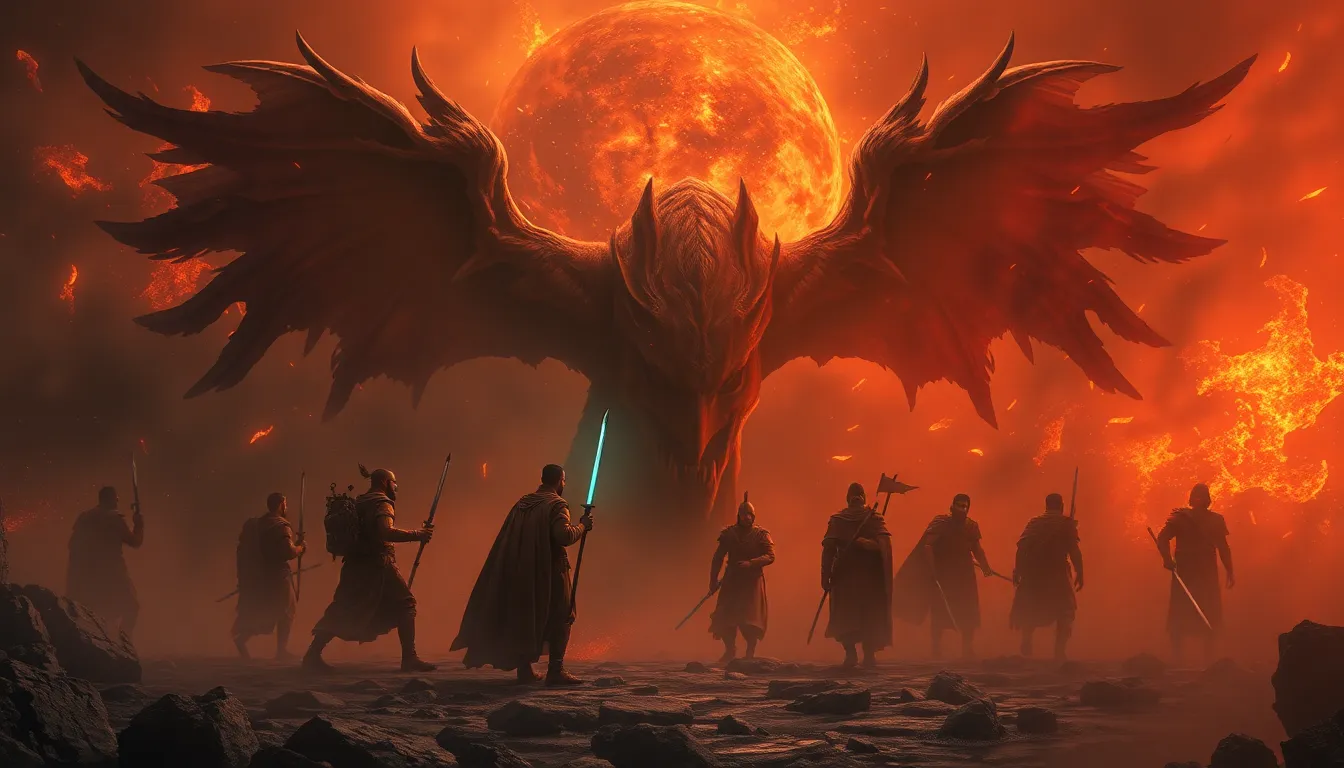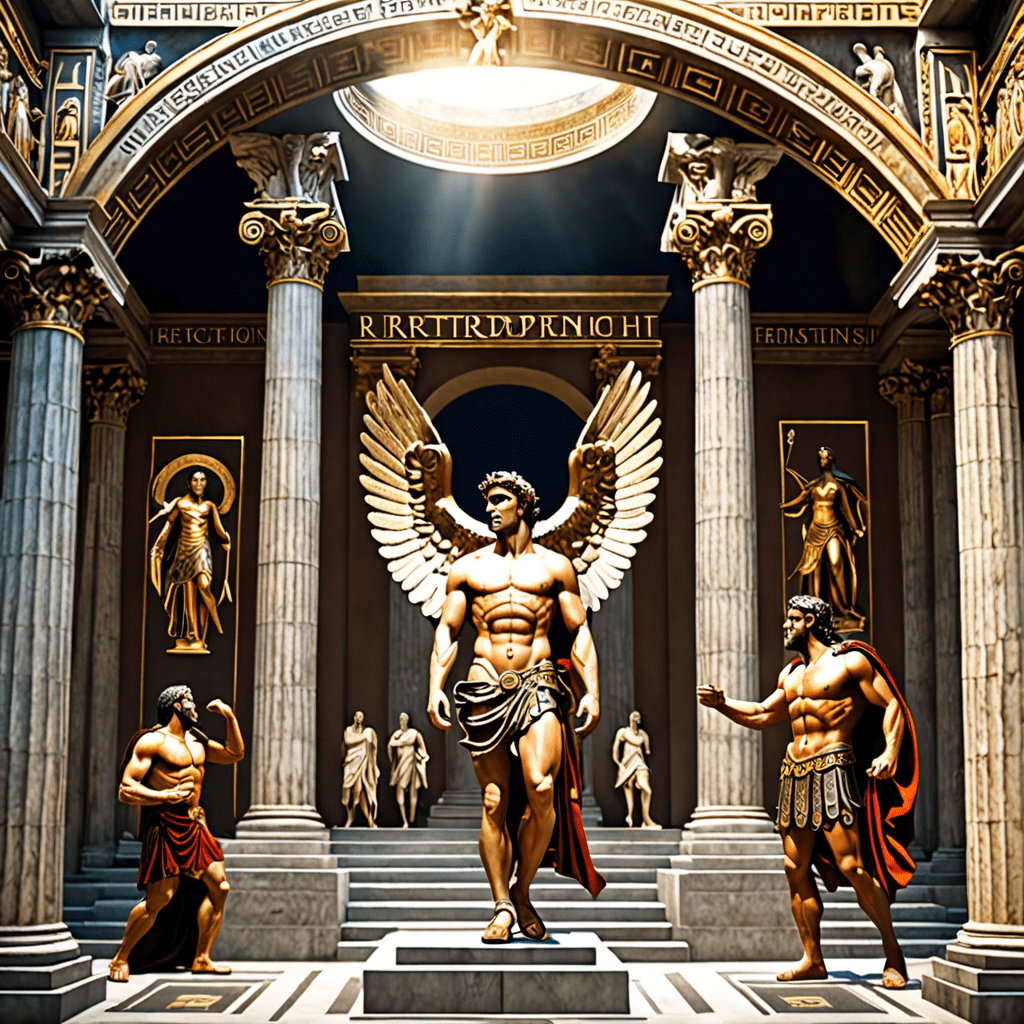Underworld Myths: The Dark Tales That Shape Our Culture
I. Introduction to Underworld Myths
Underworld myths are rich narratives that explore the realms of death and the afterlife, offering profound insights into the beliefs and values of various cultures. These tales often serve as metaphors for the human experience, grappling with themes of mortality, morality, and existence beyond life. The significance of these myths lies not only in their historical context but also in their ability to shape cultural identities and societal norms.
Across different civilizations, the concept of an underworld varies greatly, ranging from paradisiacal realms to places of torment. The purpose of this article is to delve into the historical context, major myths, common themes, psychological impacts, and contemporary relevance of underworld myths, highlighting their enduring influence on culture and society.
II. Historical Context of Underworld Myths
Underworld myths have existed since the dawn of civilization, reflecting humanity’s curiosity and anxiety about death. Ancient civilizations, such as the Egyptians, Greeks, and Mesopotamians, developed intricate beliefs about the afterlife, often involving elaborate rituals and moral codes.
- A. Ancient civilizations and their beliefs about the afterlife: Many ancient societies constructed elaborate myths surrounding the afterlife, believing in the journey of the soul after death. For instance, the Egyptians believed in a judgment process where the heart was weighed against a feather to determine the soul’s fate.
- B. Evolution of underworld concepts through history: As societies evolved, so did their underworld myths. The Greek concept of Hades shifted from a shadowy realm to a more complex universe with distinct areas for the virtuous and the wicked.
- C. Comparison of underworld myths across cultures: While underworlds differ in details, similarities often arise in their portrayal of moral judgment and the role of deities or guides.
III. Major Underworld Myths from Around the World
Underworld myths vary significantly across cultures, each reflecting unique beliefs and practices.
- A. Greek Underworld: Hades and its significance: The Greek underworld, Hades, is ruled by the god Hades. It is a realm where souls reside after death, categorized into areas like the Elysian Fields for the righteous and Tartarus for the damned.
- B. Egyptian Duat: The journey to the afterlife: In ancient Egypt, Duat was the realm of the dead. Here, the deceased would navigate trials and face Osiris, the god of the afterlife, to secure eternal life.
- C. Mesopotamian Underworld: The realm of Ereshkigal: The Mesopotamian underworld, ruled by Ereshkigal, was a gloomy place where all souls went, reflecting a more fatalistic view of death.
- D. Norse Hel: The fate of the unworthy: In Norse mythology, Hel is a realm for those who did not die gloriously in battle. It is ruled by the goddess Hel and is often depicted as a cold and dreary place.
- E. Indigenous Underworlds: Perspectives from Native American and Aboriginal cultures: Many Indigenous cultures have unique beliefs about the afterlife, often viewing it as a continuation of life on Earth, with ancestors playing a vital role in guiding the living.
IV. Common Themes in Underworld Myths
Despite the diversity of underworld myths, several common themes emerge:
- A. Death and rebirth motifs: Many myths depict death as a transformation rather than an end, symbolizing the cyclical nature of life.
- B. Judgment and moral consequences: The concept of moral judgment is prevalent, with many myths exploring the idea that one’s actions in life determine their fate in the afterlife.
- C. The role of guides and deities in the afterlife journey: Deities or guides, such as Charon in Greek mythology or Anubis in Egyptian belief, are often responsible for escorting souls to their respective realms.
- D. Symbolism of darkness and light: Underworlds often symbolize darkness and despair, contrasting with the light of the living world, illustrating the duality of existence.
V. The Psychological Impact of Underworld Myths
Underworld myths resonate deeply within the human psyche, influencing how individuals perceive death and the afterlife.
- A. Fear and fascination with death: These myths can evoke both fear and fascination, reflecting humanity’s struggle to understand mortality.
- B. Coping mechanisms for grief and loss: By providing narratives around death, underworld myths help individuals cope with the loss of loved ones, offering a framework for understanding grief.
- C. Influence on cultural identity and values: Underworld myths often shape cultural identities, influencing societal values and moral frameworks.
VI. Underworld Myths in Literature and Art
The influence of underworld myths extends into literature and art, inspiring countless works throughout history.
- A. Classic literary works inspired by underworld themes: Texts such as Dante’s “Inferno” and Virgil’s “Aeneid” explore underworld journeys, reflecting the cultural views of their times.
- B. Depictions in visual arts and their cultural significance: Artists like Hieronymus Bosch and Gustave Doré have portrayed underworld themes, evoking the moral and spiritual dilemmas present in these myths.
- C. Modern interpretations in films and media: Contemporary films and books often revisit underworld themes, such as in Pixar’s “Coco,” which celebrates the Mexican tradition of Día de los Muertos.
VII. The Role of Underworld Myths in Religion and Spirituality
Underworld myths are intertwined with religious beliefs, influencing spiritual practices and understandings of life after death.
- A. Connection to rituals and funerary practices: Many cultures incorporate underworld myths into their funerary rites, believing they help guide the deceased to the afterlife.
- B. Underworld myths and their influence on contemporary religions: Elements of ancient underworld myths can be seen in modern religious beliefs, shaping concepts of heaven and hell.
- C. The search for meaning through the lens of myth: These myths provide a narrative framework for understanding human existence and the quest for meaning.
VIII. Contemporary Relevance of Underworld Myths
In today’s society, underworld myths continue to resonate, shaping modern storytelling and cultural narratives.
- A. Underworld themes in modern storytelling and pop culture: From literature to video games, themes of death and the afterlife are prevalent, reflecting ongoing human concerns.
- B. Psychological and social implications in today’s world: Underworld myths influence how societies deal with death, grief, and the collective memory of those who have passed.
- C. The resurgence of interest in ancient myths: As people seek deeper connections to their cultural roots, there is a growing interest in exploring ancient underworld myths.
IX. Critiques and Controversies Surrounding Underworld Myths
While underworld myths are rich in meaning, they are not without their critiques and controversies.
- A. Misinterpretations and cultural appropriation: There is a growing concern about the misinterpretation of these myths, especially in popular culture, leading to cultural appropriation.
- B. The impact of colonial narratives: Colonial histories have often distorted indigenous underworld beliefs, leading to misunderstandings and loss of cultural significance.



